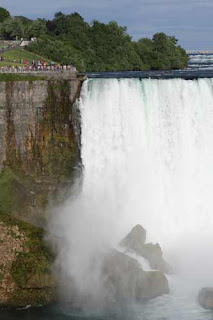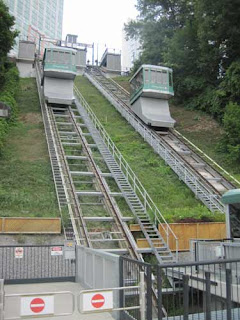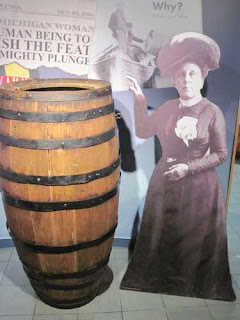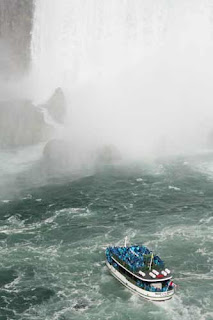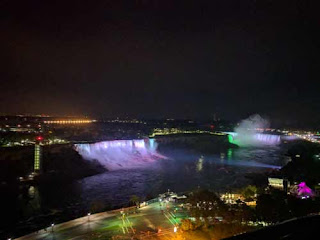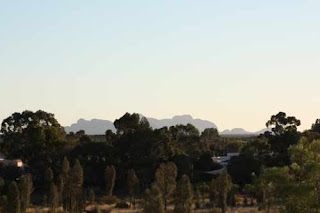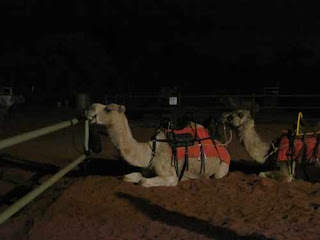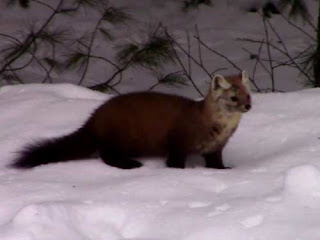Location: Niagara Falls, Ontario, Canada
Address: 6650 Niagara Pkwy.
Date: Dec 2003
Website: www.niagaraparks.com
Niagara Falls is home to some of the most impressive waterfalls in the world. The largest waterfall is the Horseshoe Falls. It is named after the curved shape that was caused by erosion due to the six million cubic feet of water that rush over its edge every minute. The Niagara River flows from Lake Erie to Lake Ontario and when it passes over the falls it is a sight to be seen. We like to visit every chance we get in order to see the power of nature up close.
The Niagara River divides as it approaches the falls and some of the water goes over the smaller American and Bridal Veil falls (left hand side of picture above) which are located in New York, USA. The Horseshoe Falls takes on the majority of the water as it plunges over the edge and drops almost 200 feet into the depths below. It is located almost entirely in Ontario, Canada.
Only a small portion of the falls are considered to be within the United States of America.
The Canadian side of the falls draws huge amounts of tourists all year long. There are hotels, casinos and viewing towers like the Skylon that let them stay for a longer look from a higher vantage point.
There are many ways to get down to the falls for a closer look from the hotels above. One of the most fun is an incline railway.
The closest you can get to the falls is at Table Rock. You can get very close to the water as it rushes over the edge. Just be prepared to get wet as the mist that comes up as the water crashes down below can make it seem like it is always raining.
On a warm summer day the mist can be refreshing. On a colder fall day it can make you regret your clothing choices. On any sunny day, the mist and sun can treat you to a variety of rainbows.
Through the years many daredevils have wanted to get an even closer look at the falls. Annie Taylor (above) was the first person to go over the Horseshoe Falls in a barrel. Annie survived her stunt in 1901. Since then many others have tried with mixed results.
We can't imagine venturing into the rapids of the Niagara River.
The rapidly flowing water of the Niagara River is diverted to be used for electricity by both the United States and Canada. Above is an older power station that used to be used for this purpose. Today over a million people get power by harnessing the force of the water.
While we wouldn't get into the water at the top of the falls, we have ventured into the rapids below. The Maid Of The Mist boats used to take tourists up as close as they could to the crashing water of the falls. Today, Hornblower boats have taken over the job.
From the boats you can look up at the Horseshoe Falls from a very unique angle. If you are willing to get completely soaked you can experience the weight of the falls crashing down in front of you.
If a boat is not your thing, you can also do the Journey Behind The Falls. Here you can get right down near the bottom of the falls while still staying on dry land. Well, wet land anyways. There is also a little hallway with a tiny opening at the end where you are actually behind the falls itself.
Once the sun goes down, the falls are still entertaining. In the evenings colourful spotlights bring the falls to life in a whole different way.
On summer weekends and during special events, fireworks light up the sky over the falls.
The falls are still worth seeing in the winter months as the mist rises and freezes wherever it lands.
No matter how cold it gets, the falls have never frozen solid. Even in the coldest winter the water still flows. There is always something to see at the Horseshoe Falls all year long. We recommend you visit Niagara Falls at least once in your life. We try to do it at least once in a year.
Map of Our World
 Horseshoe Falls
Horseshoe FallsPost # 303


